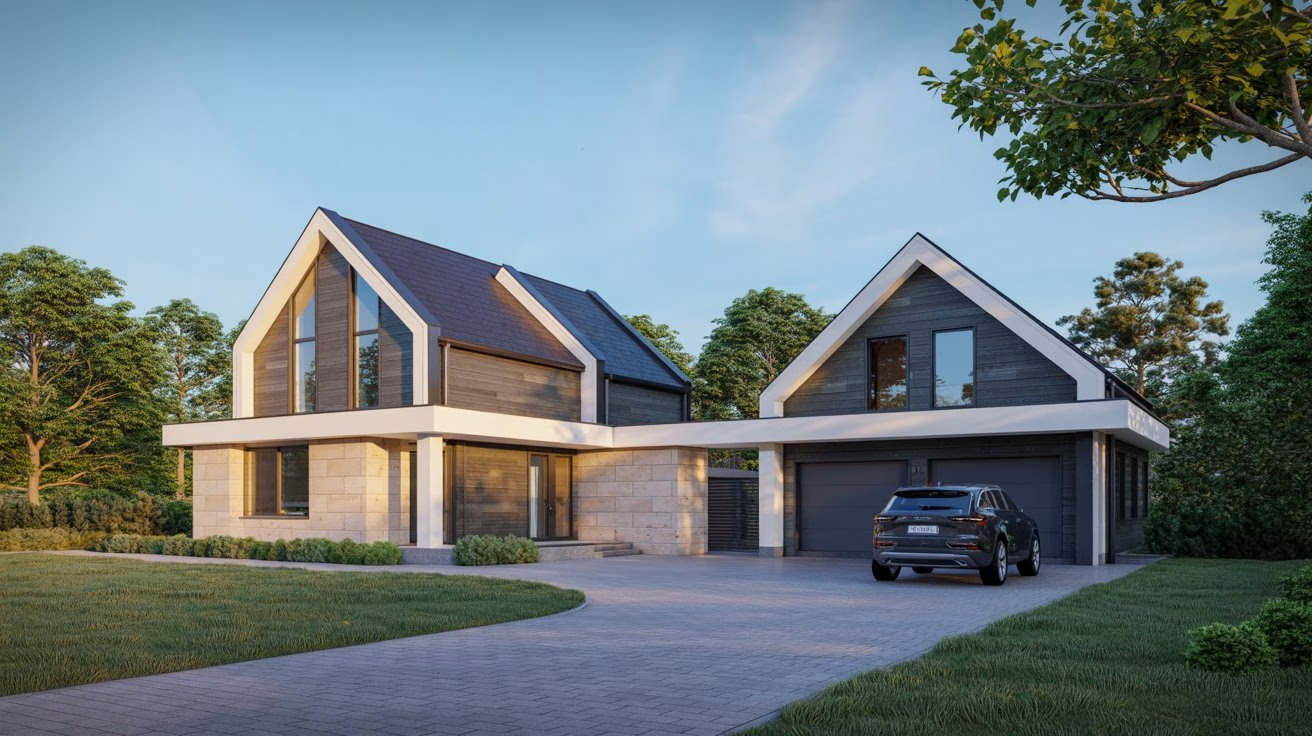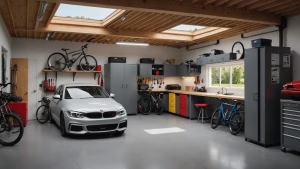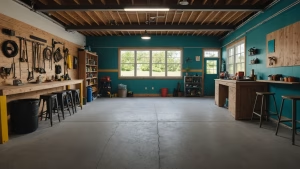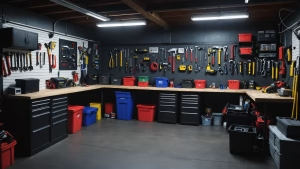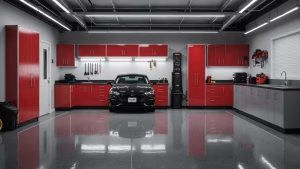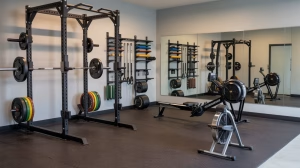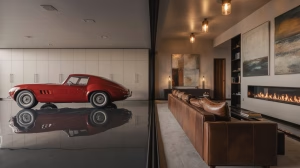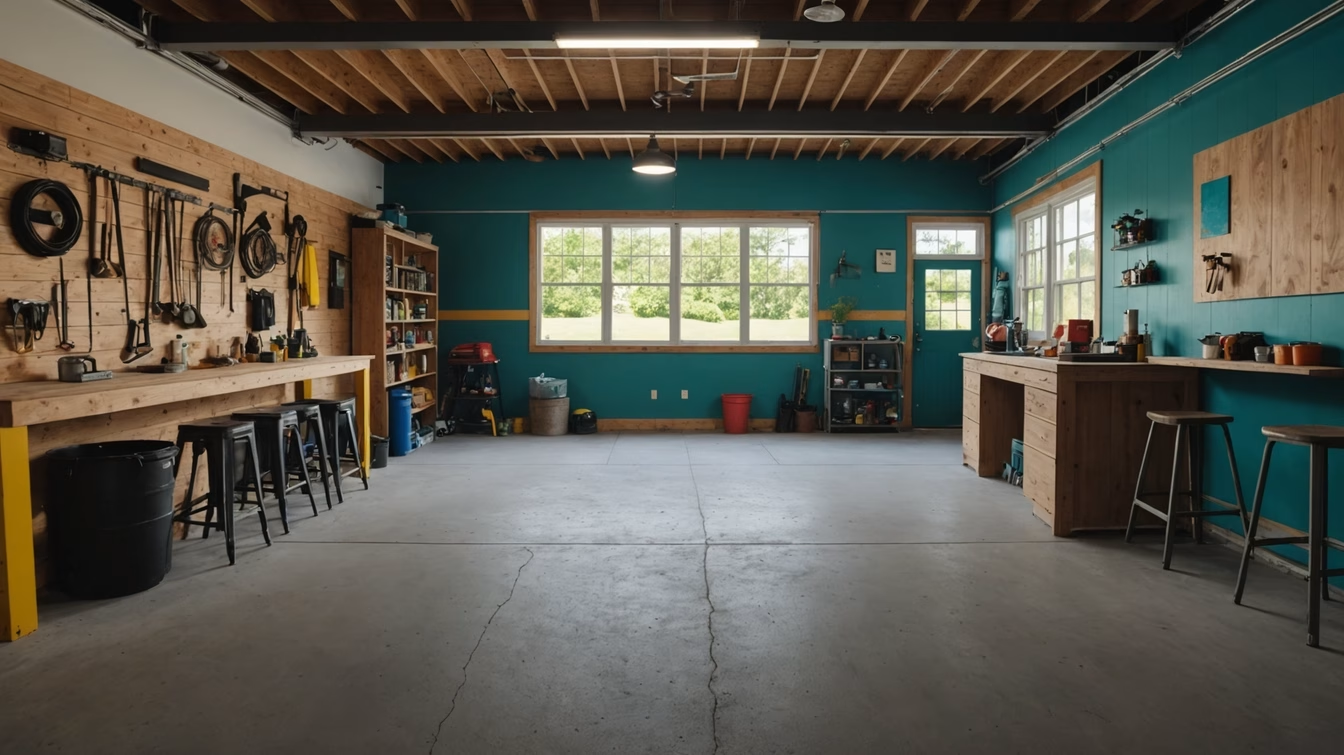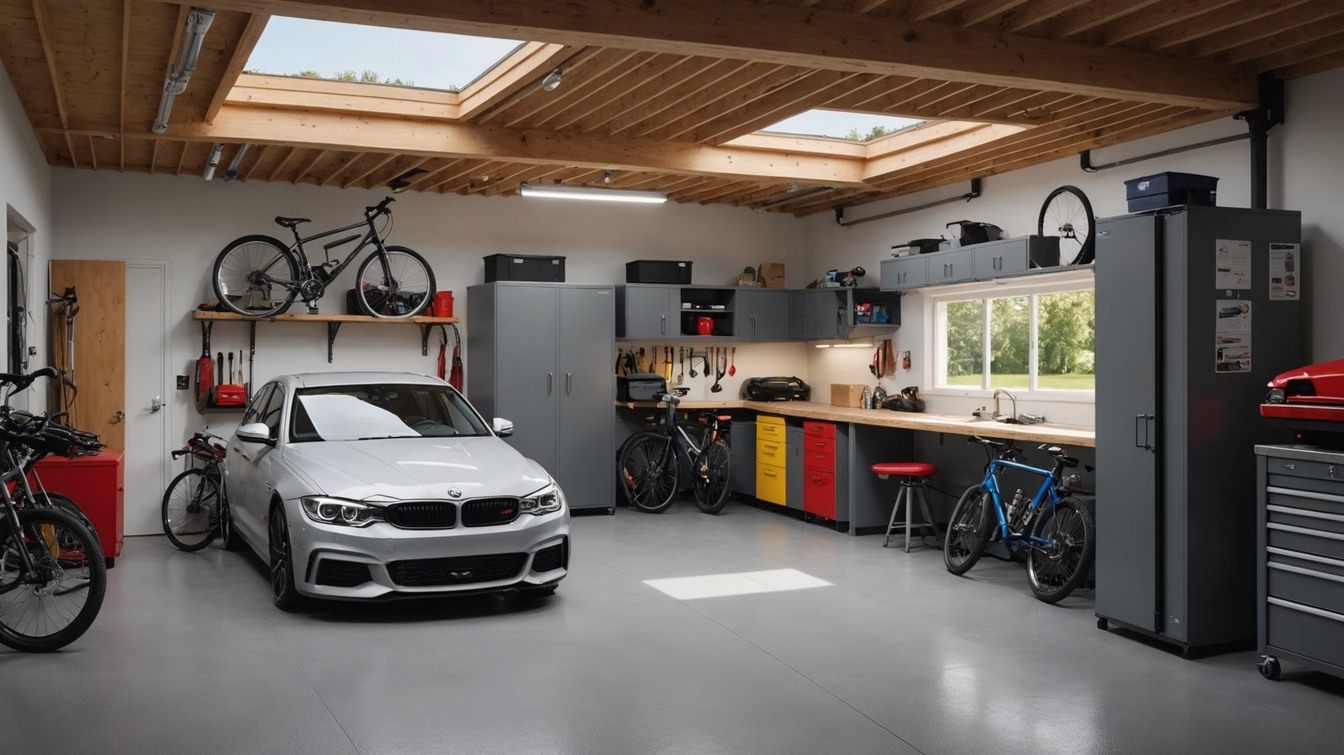Your garage, often an overlooked element of your home’s exterior, plays a significant role in its overall curb appeal. It’s not just a place to park your car or store your tools; it’s an integral part of your property’s visual narrative. The right siding color can transform a mundane structure into a striking architectural feature, enhancing your home’s aesthetic and even its value. Choosing the perfect hue, however, can be a daunting task with a myriad of options available. This comprehensive guide will explore 13 inspiring garage exterior siding color ideas, offering insights, practical advice, and creative prompts to help you make an informed decision that harmonizes with your home’s style and your personal taste.
Beyond mere aesthetics, the color you select for your garage siding can influence perceived size, light reflection, and even the emotional response of those viewing your property. A well-chosen color can make a small garage appear larger, a traditional home feel more contemporary, or a minimalist design pop with a touch of unexpected vibrancy. We’ll delve into the nuances of each color idea, considering various architectural styles, environmental factors, and popular trends, ensuring you have all the information needed to embark on your garage transformation journey with confidence.
1. Classic White: Timeless Elegance and Brightness
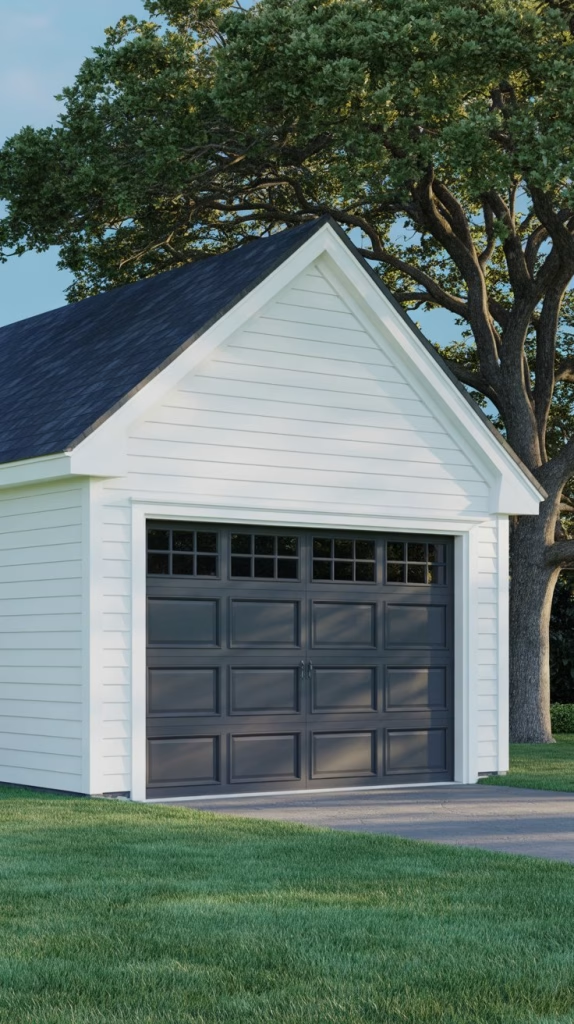
Classic white is an enduring choice for garage siding, offering a timeless elegance that complements virtually any architectural style, from traditional farmhouses to modern minimalist designs. Its inherent brightness creates a sense of freshness and cleanliness, making your property feel more expansive and welcoming. White siding is particularly effective in drawing attention to architectural details, allowing decorative trim, windows, or landscaping to truly shine. Furthermore, white reflects a significant amount of sunlight, which can be advantageous in warmer climates by helping to keep the interior of your garage cooler. This natural cooling effect can lead to energy savings, especially if your garage is insulated and you frequently use it as a workspace.
Beyond its aesthetic appeal and practical benefits, classic white offers unparalleled versatility. It serves as a perfect canvas for a variety of accent colors for your garage door, trim, and even planters or outdoor furniture. A dark gray or black garage door can create a striking contrast, while a natural wood door can introduce warmth and a touch of rustic charm. For a more subtle approach, consider a light gray or beige garage door to maintain a harmonious, understated look. The key to maintaining the pristine appearance of white siding lies in regular cleaning, as dirt and grime can be more noticeable. However, the effort is well worth it for the crisp, clean aesthetic it provides.
2. Sophisticated Gray: Versatility and Modern Appeal
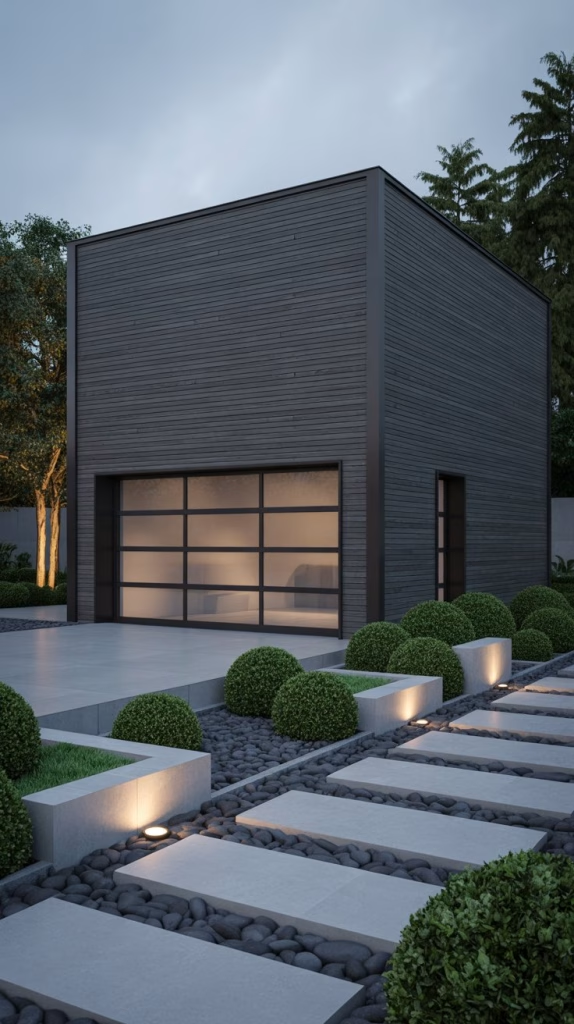
Gray is a remarkably versatile color that has surged in popularity for exterior siding, and for good reason. It offers a sophisticated and contemporary aesthetic that can range from light, airy tones to deep, dramatic charcoals. Light grays can mimic the brightness of white while offering a bit more warmth and less susceptibility to visible dirt. They provide a calm and understated backdrop, allowing other elements of your home’s exterior, such as vibrant front doors or colorful landscaping, to stand out. Darker grays, on the other hand, exude a sense of modern elegance and can create a dramatic, grounded look. They pair exceptionally well with minimalist architecture and can make a strong visual statement.
The beauty of gray lies in its ability to harmonize with almost any other color. It acts as a neutral foundation, allowing you to experiment with various accent colors for your garage door, trim, and even your main house color. For instance, a medium gray garage with a bright red or yellow garage door can create an unexpected pop of color and personality. Alternatively, pairing gray with natural wood elements can soften its contemporary edge and introduce a touch of warmth and organic texture. From a practical standpoint, gray siding tends to conceal dirt and minor imperfections more effectively than white, requiring less frequent cleaning and maintenance, which can be a significant advantage for busy homeowners.
3. Earthy Taupe: Warmth, Subtlety, and Natural Harmony
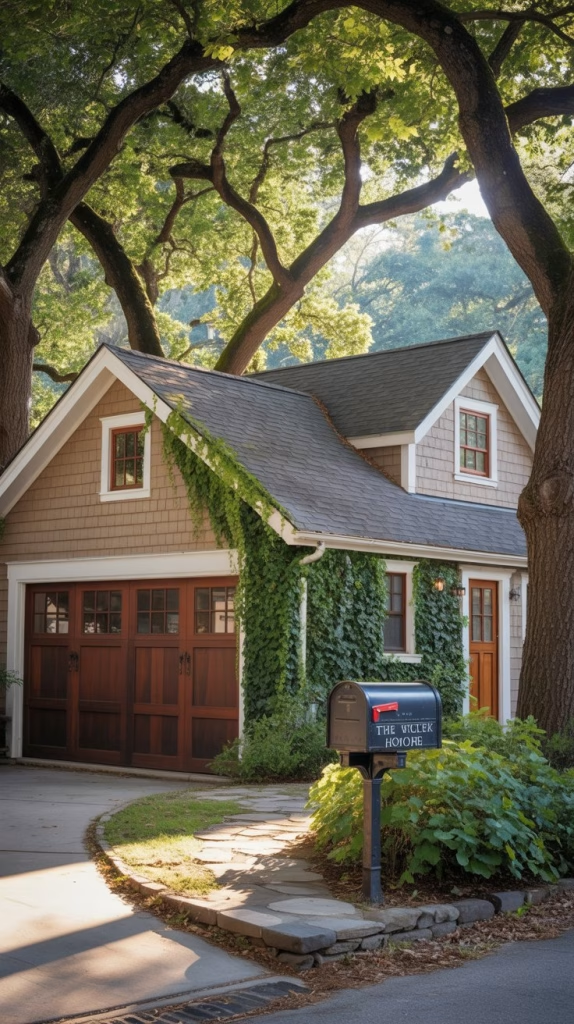
Taupe, a sophisticated blend of gray and brown, offers a warm and inviting alternative to pure gray or beige. Its inherent earthiness allows it to blend seamlessly with natural surroundings, making it an excellent choice for homes situated in landscapes with mature trees, gardens, or natural stone elements. Taupe creates a subtle and understated elegance, providing a gentle backdrop that allows architectural details and landscaping to take center stage without being overpowering. It’s a color that evokes comfort and serenity, making your garage feel like an integrated and harmonious part of your property rather than a stark addition.
One of the key advantages of taupe is its incredible versatility in complementing other colors. It pairs beautifully with a wide range of shades, from deep greens and blues to various shades of brown and even muted reds. This flexibility allows for diverse design possibilities when selecting your garage door, trim, and other exterior accents. For instance, a dark green garage door can enhance the natural feel, while a cream or off-white trim can create a classic, refined look. Taupe also performs well in various lighting conditions, appearing richer in bright sunlight and maintaining its warmth even on overcast days. Its ability to mask dirt and dust better than lighter colors also contributes to its low-maintenance appeal, ensuring your garage looks pristine with less effort.
4. Deep Navy Blue: Bold Sophistication and Coastal Charm

For those looking to make a statement, deep navy blue offers a powerful combination of sophistication and traditional charm. This rich, profound hue adds a sense of depth and gravitas to your garage, instantly elevating its aesthetic. Navy blue siding is particularly well-suited for coastal homes, evoking the vastness of the ocean and the tranquility of maritime landscapes. However, its versatility extends beyond seaside settings; it can also bring a touch of classic elegance to traditional homes or a pop of unexpected color to contemporary designs, offering a refreshing alternative to more conventional neutrals.
Pairing navy blue siding with contrasting colors for your garage door and trim can create truly stunning effects. Crisp white trim provides a sharp, nautical-inspired contrast that is both timeless and chic. For the garage door, consider a classic white for a clean, bright look, or a natural wood tone to introduce warmth and an organic feel. Even a subtle light gray can work beautifully, maintaining the sophisticated palette. Deep navy blue also offers practical benefits; its dark hue helps to conceal dirt and imperfections, making it a low-maintenance option for homeowners. Furthermore, in cooler climates, darker colors can absorb more solar heat, potentially contributing to a slightly warmer interior, although this effect is typically minimal for an unheated garage.
5. Rich Forest Green: Natural Serenity and Rustic Appeal
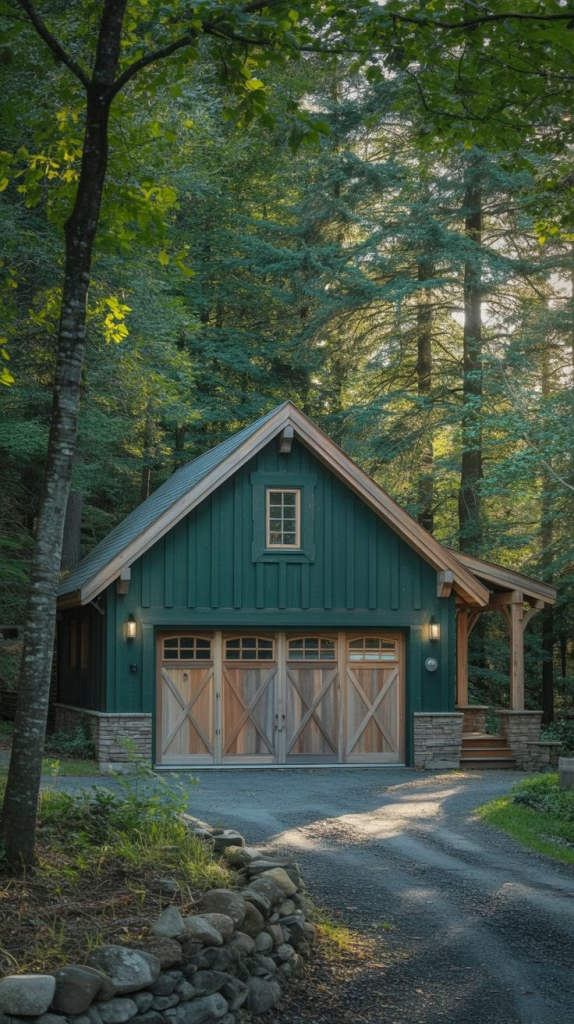
Embrace the tranquility of nature with rich forest green siding for your garage. This deep, earthy hue seamlessly integrates your garage into natural surroundings, making it an ideal choice for homes nestled among trees, expansive lawns, or in rural settings. Forest green evokes a sense of calm and serenity, providing a grounding presence that feels both inviting and understated. It’s a color that speaks of stability and tradition, often found in classic architectural styles like craftsman, traditional, or rustic designs, but can also offer a surprising touch of organic contrast in more modern settings.
The beauty of forest green lies in its ability to complement a wide spectrum of natural materials and colors. It pairs exceptionally well with natural wood accents, such as a cedar garage door or exposed timber beams, enhancing its rustic appeal. Stone facades, brick details, and even wrought iron elements can also be beautifully highlighted by a forest green backdrop. For trim, consider warm creams, off-whites, or even a deep beige to create a harmonious and natural palette. From a practical standpoint, darker greens are excellent at camouflaging dirt, pollen, and environmental stains, making them a low-maintenance option that retains its rich appearance over time. This color choice not only enhances the visual harmony of your property but also connects your home more deeply with its natural environment.
6. Warm Beige: Understated Elegance and Versatility
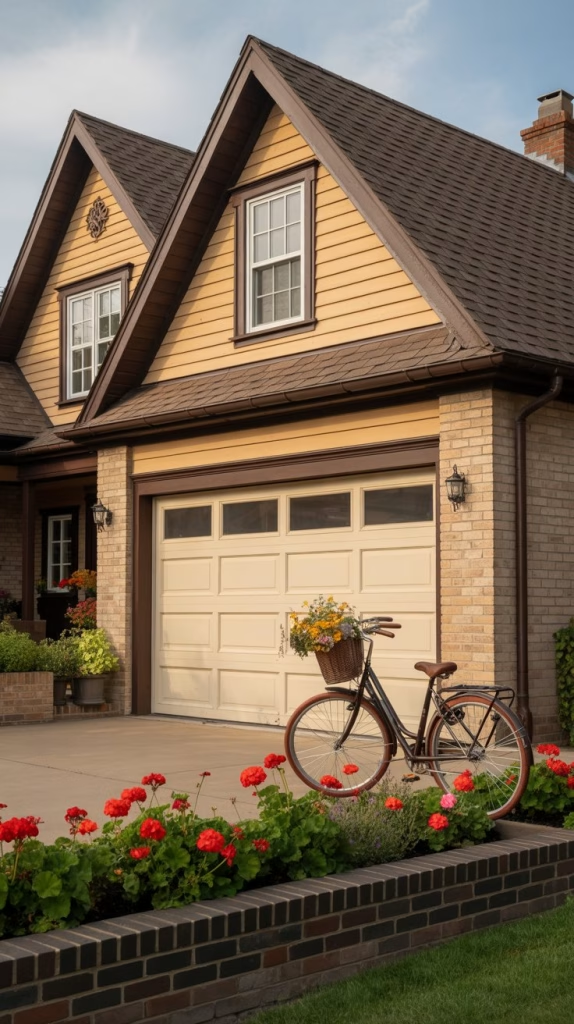
Warm beige is a quintessential neutral that offers understated elegance and incredible versatility for garage siding. Unlike stark white, beige introduces a subtle warmth that can make your garage feel more inviting and less imposing. It’s a timeless choice that effortlessly blends with a wide array of architectural styles, from traditional to contemporary, and works particularly well with homes featuring brick, stone, or natural wood elements. Beige provides a sophisticated backdrop that allows your landscaping and other exterior features to stand out without competing for attention, creating a harmonious and balanced overall aesthetic.
One of the significant advantages of warm beige is its ability to adapt to different lighting conditions and surrounding colors. It can appear slightly richer in direct sunlight and maintain its warmth even on overcast days. Pairing beige with contrasting trim colors, such as dark brown, charcoal gray, or even a muted green, can define architectural lines and add depth. For the garage door, consider a matching beige for a cohesive look, a natural wood tone for added warmth, or a darker brown for a more grounded feel. Furthermore, beige is a practical choice for maintenance, as it is highly effective at camouflaging dust, dirt, and minor imperfections, ensuring your garage maintains a clean and well-kept appearance with minimal effort. Its classic appeal and practical benefits make warm beige a consistently popular choice for discerning homeowners.
7. Bold Black: Modern Drama and Striking Contrast

For those seeking to make a definitive statement, bold black siding for your garage offers unparalleled modern drama and sophisticated contrast. Black creates a powerful, contemporary aesthetic that can transform a traditional structure into a striking architectural feature. It’s particularly effective in minimalist designs, where its starkness can highlight clean lines and geometric forms. When used thoughtfully, black can make your garage appear more grounded and substantial, adding a sense of luxury and cutting-edge design to your property. It’s a daring choice that, when executed well, can significantly elevate your home’s curb appeal and set it apart from the ordinary.
The impact of black siding is undeniable, but its success often lies in strategic pairing with other materials and colors. Combining black siding with natural wood elements, such as a cedar garage door or timber accents, can soften its intensity and introduce warmth and texture. White or light gray trim can create a sharp, graphic contrast, defining architectural elements and adding visual interest. Consider using black in conjunction with concrete, glass, or metal details for a truly contemporary look. From a practical perspective, black siding is excellent at hiding dirt, grime, and environmental stains, making it a very low-maintenance option. However, it’s important to note that black absorbs more solar heat, which can make the garage interior warmer in direct sunlight, a consideration for those in very hot climates or if the garage is a primary workspace.
8. Classic Barn Red: Rustic Charm and Americana Spirit
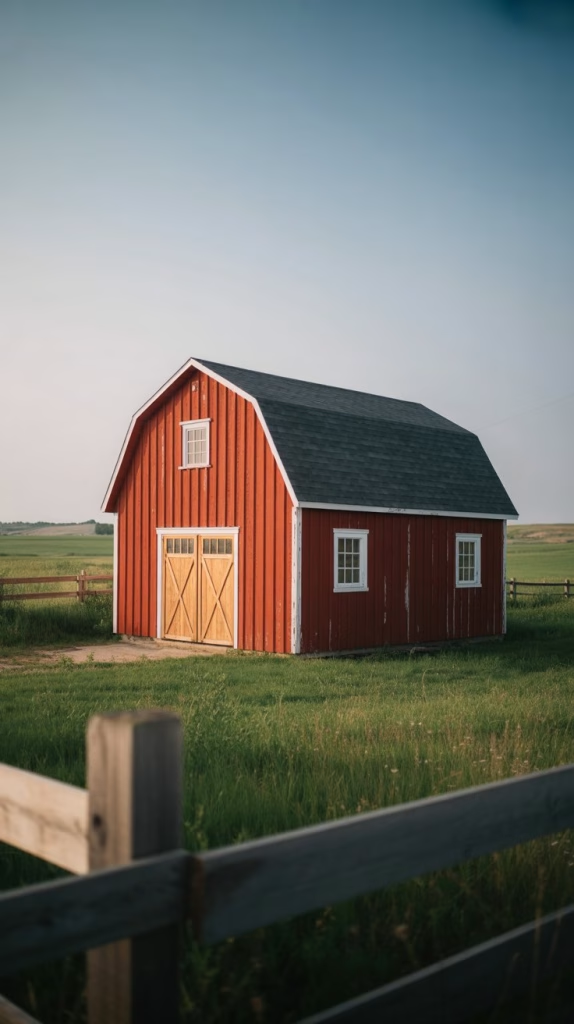
Embrace the timeless appeal of Americana with classic barn red siding for your garage. This iconic color evokes images of idyllic farmsteads and rural landscapes, infusing your property with a sense of rustic charm and nostalgic warmth. Barn red is a bold yet inviting hue that instantly commands attention, adding character and a touch of cheerful vibrancy to your home’s exterior. It’s a particularly fitting choice for homes with a traditional, farmhouse, or country-style architecture, creating a cohesive and authentic aesthetic that feels deeply rooted in tradition.
The striking nature of barn red allows it to stand out beautifully against a backdrop of natural greenery, making your garage a focal point on your property. It pairs exceptionally well with classic white trim, which provides a crisp contrast that highlights architectural details and enhances its traditional appeal. For the garage door, consider a matching barn red for a cohesive look, a crisp white for a classic farm feel, or a natural wood finish to amplify the rustic charm. While bold, barn red is surprisingly versatile and can complement various surrounding materials, including stone foundations, gravel driveways, and lush landscaping. Its cheerful disposition also helps to brighten up even the most overcast days, ensuring your garage always presents a welcoming and vibrant presence.
9. Muted Sage Green: Calmness, Sophistication, and Nature-Inspired
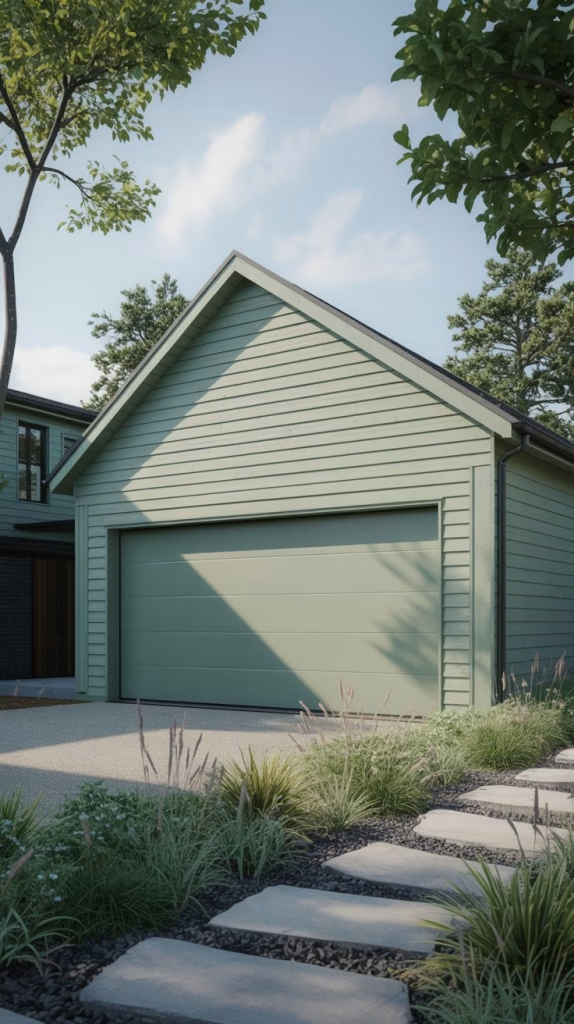
Muted sage green offers a sophisticated and calming alternative to bolder greens, providing a subtle connection to nature without being overwhelming. This soft, earthy hue brings a sense of tranquility and elegance to your garage, making it feel like an organic extension of your landscape. Sage green is incredibly versatile, blending beautifully with a wide range of architectural styles, from charming cottages to contemporary homes, and it particularly shines when paired with natural materials like wood, stone, and various types of foliage. Its understated appeal allows your garage to contribute to the overall harmony of your property, rather than dominating the visual field.
One of the key advantages of muted sage green is its ability to create a sense of cohesion with the surrounding environment. It complements both cool and warm tones, allowing for flexibility in selecting trim and accent colors. For instance, pairing sage green with cream or off-white trim creates a gentle, classic look, while darker gray or charcoal accents can introduce a more modern edge. A natural wood garage door or a light gray one can further enhance the serene, nature-inspired palette. Furthermore, sage green is practical for exterior siding as its muted tone is forgiving when it comes to minor dirt and dust, maintaining a clean appearance with relatively low maintenance. This color is an excellent choice for homeowners seeking a sophisticated, serene, and naturally inspired aesthetic for their garage.
10. Deep Charcoal: Urban Edge and Modern Masculinity
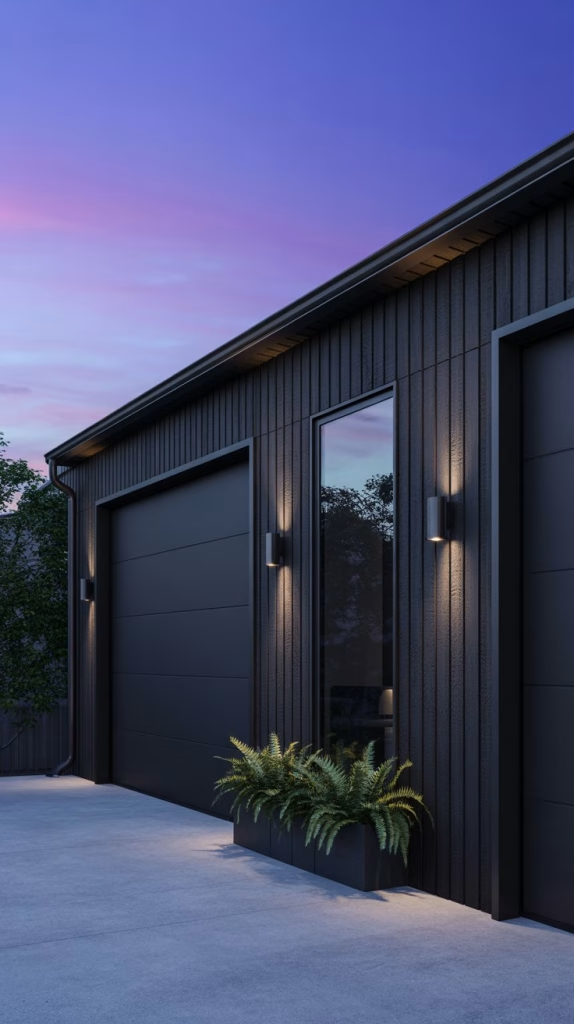
Deep charcoal, a darker and more intense variation of gray, exudes an urban edge and a sense of modern masculinity. This rich, almost-black hue provides a powerful and sophisticated backdrop for your garage, making it an ideal choice for contemporary homes, industrial-inspired designs, or properties aiming for a bold, high-contrast look. Charcoal siding creates a dramatic visual impact, grounding the structure and lending an air of refinement and strength. It’s a color that speaks to modern sensibilities, often favored in architectural styles that prioritize clean lines, strong forms, and a minimalist aesthetic.
The intensity of deep charcoal allows it to pair exceptionally well with lighter contrasting elements. Crisp white trim can create a striking, graphic statement, emphasizing the architectural details of your garage. For the garage door, consider a matching charcoal or black for a seamless, monolithic look, or a natural wood finish to introduce warmth and an organic texture that softens the modern edge. Metals like brushed steel, aluminum, or even copper can also complement charcoal siding beautifully, enhancing its industrial or contemporary feel. Practically, deep charcoal is highly effective at concealing dirt, grime, and environmental stains, making it an excellent low-maintenance option for busy homeowners. Its ability to command attention while remaining understated makes it a compelling choice for a truly modern garage exterior.
11. Sunny Yellow (Muted): Cheerful Vibrancy and Welcoming Charm
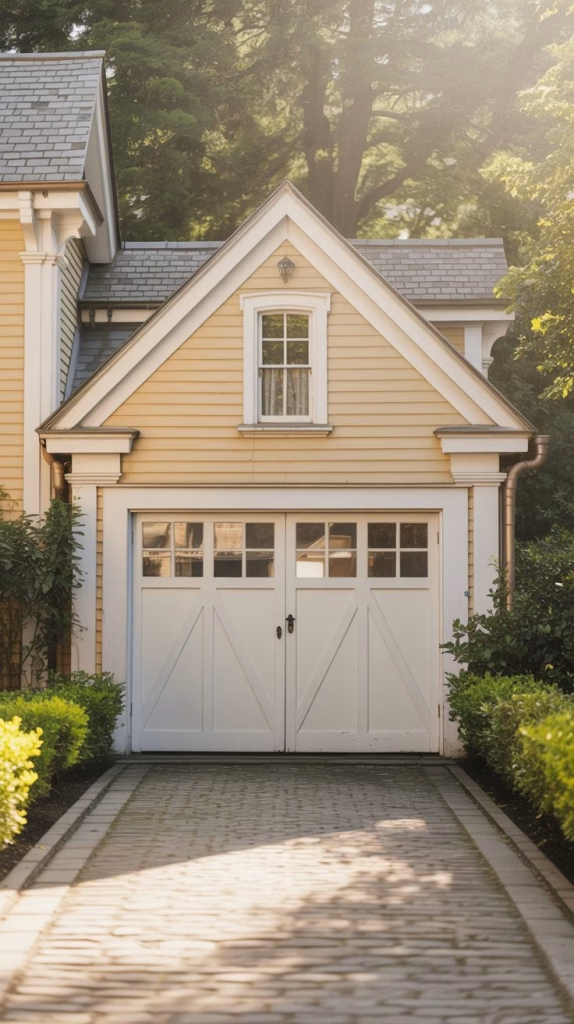
While bold, a muted sunny yellow can bring an undeniable sense of cheerfulness and welcoming charm to your garage. Unlike primary yellow, a muted or pastel yellow offers a softer vibrancy that feels inviting rather than overwhelming. This joyful hue can brighten up even the most overcast days, infusing your property with a positive and optimistic energy. It’s a wonderful choice for traditional homes, cottages, or properties looking to evoke a sense of quaintness and approachability. A sunny yellow garage can become a delightful focal point, adding personality and a unique touch to your home’s exterior.
To ensure your sunny yellow garage remains tasteful and harmonious, careful consideration of accompanying colors is essential. Crisp white trim provides a classic and clean contrast that enhances the cheerful aesthetic. For the garage door, a classic white or an off-white will maintain the bright and airy feel. Alternatively, a light gray or a muted green could introduce a subtle complementary tone. Yellow siding pairs beautifully with lush green landscaping, as the two colors naturally enhance each other. While lighter colors generally show dirt more readily, the cheerful nature of muted yellow often outweighs this concern for many homeowners, as it truly transforms the perceived disposition of the entire property. This color is perfect for those who want their garage to radiate warmth and welcome.
12. Soft Sky Blue: Serenity, Calmness, and Coastal Breeze

Bring the serene tranquility of a clear summer sky or a gentle ocean breeze to your garage with soft sky blue siding. This calming hue offers a sense of lightness and openness, instantly making your property feel more serene and inviting. Soft sky blue is an excellent choice for homes with a coastal, beach house, or even a charming cottage aesthetic, as it naturally evokes feelings of relaxation and spaciousness. It provides a gentle backdrop that allows your landscaping and architectural details to emerge with subtle elegance, creating a cohesive and peaceful outdoor environment.
The beauty of soft sky blue lies in its understated charm and its ability to pair harmoniously with a variety of other colors. Crisp white trim is a classic pairing that enhances its fresh, airy feel and reinforces a coastal or traditional aesthetic. For the garage door, consider a classic white, a light gray, or even a natural wood tone to introduce warmth and texture. The subtle nature of sky blue also allows for flexibility with your main house color, whether it’s a complementary neutral, a darker blue, or even a soft yellow. From a practical standpoint, lighter blues can show dirt more than darker hues, but their ability to brighten and open up a space often makes them a preferred choice for homeowners seeking a serene and inviting ambiance for their garage.
13. Deep Espresso Brown: Richness, Groundedness, and Natural Elegance
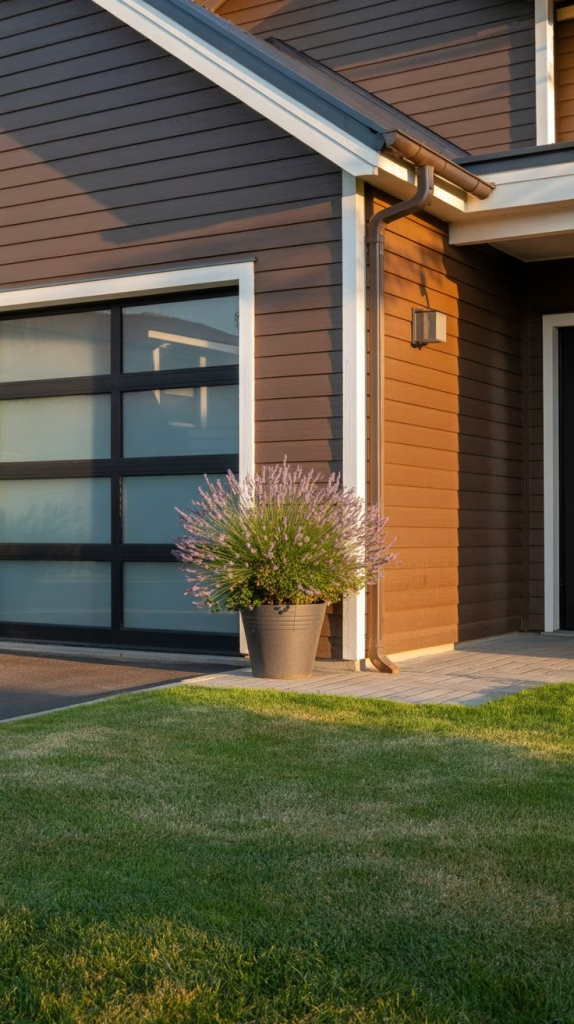
For a sophisticated and grounded aesthetic, consider deep espresso brown siding for your garage. This rich, dark hue exudes a sense of warmth, stability, and natural elegance, making it an excellent choice for homes that aim for a refined yet inviting appearance. Espresso brown is incredibly versatile, seamlessly blending with both traditional and contemporary architectural styles. It evokes the natural beauty of dark wood and rich earth tones, creating a strong connection to the surrounding landscape while providing a luxurious and substantial presence. This color can make your garage feel more integrated into the overall design of your property, rather than merely an ancillary structure.
The depth of espresso brown allows it to serve as a stunning backdrop for various accent colors and materials. Cream, beige, or even a muted gold trim can create a beautiful contrast, highlighting architectural lines and adding a touch of classic sophistication. For the garage door, a matching espresso brown can create a seamless, cohesive look, while a natural wood tone can enhance the organic feel. Alternatively, a frosted glass or a lighter, warm gray garage door can introduce a modern twist. From a practical perspective, deep espresso brown is highly effective at concealing dirt, dust, and environmental stains, making it a low-maintenance option that retains its rich appearance over time. Its timeless appeal and ability to convey both strength and warmth make it a compelling choice for homeowners seeking a truly elegant and grounded garage exterior.

